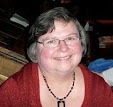I am typically not a short story reader, but since Saunders was lecturing for the Pittsburgh Arts and Lectures Literary Evening program, I was compelled to revisit the genre. I had forgotten how satisfying it can be. The stories have a dark element to them - "Victory Lap" is about a teenage abduction - but Saunders manages to avoid the depressing aftertaste by bringing a keen sense of humor to them. Each of the ten stories addresses a distinct aspect of the human condition and comes to a fulfilling ending.
Short stories are hard to write. The author must compress his or her thoughts into a limited discourse. Each word has to have meaning beyond the word itself. It must convey a feeling, a thought, and an action. George Saunders has accomplished all of this in his collection. I will look forward to future works. He says that he works on multiple stories at one time. It may be a while before the next book is released. And so, until that time, when I want a short and challenging read, I will return to Tenth of December.
 |
| George Saunders autographing Tenth of December |





























